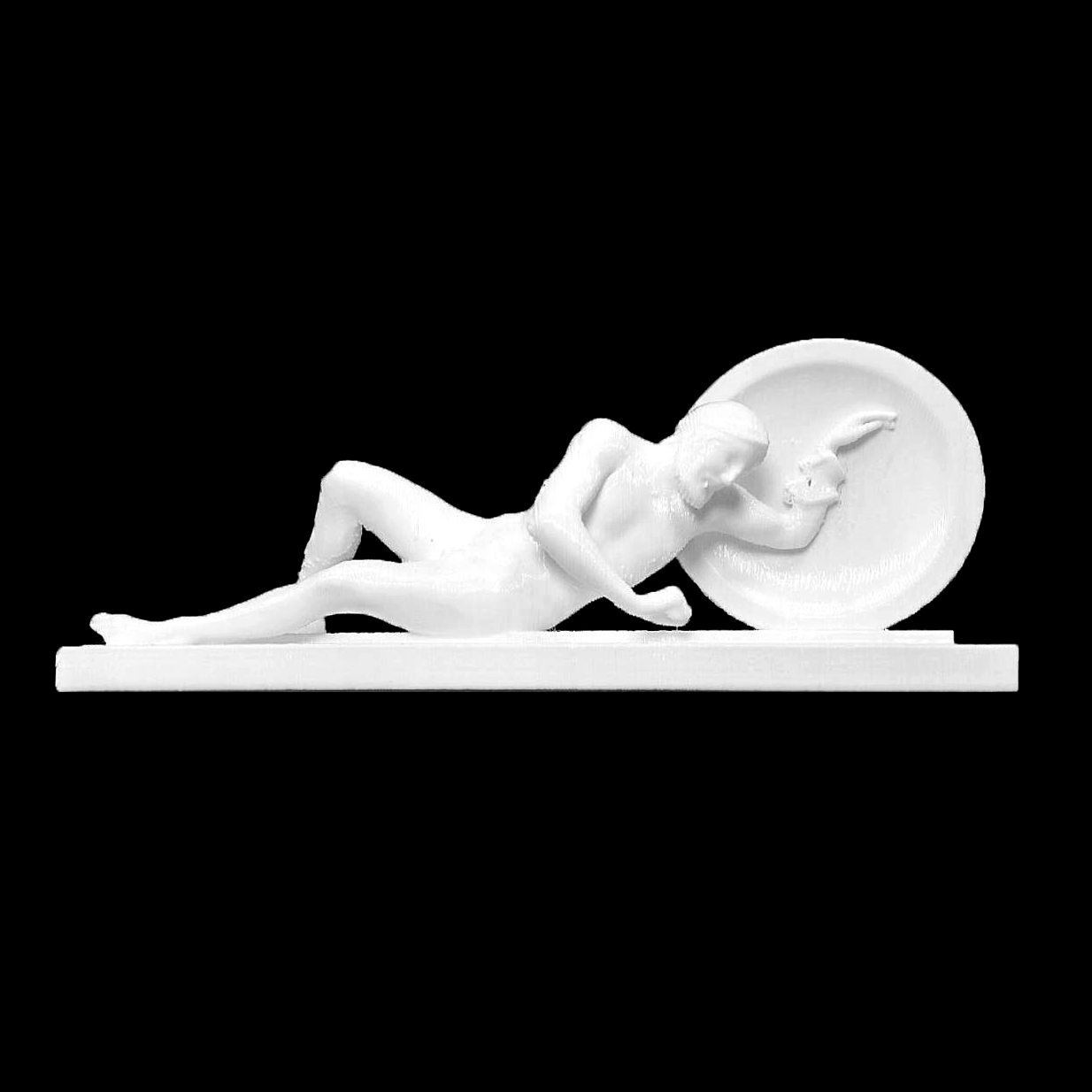
Dying Warrior- Temple of Aphaia
myminifactory
Athena stands at the center of the pediment, flanked by a fierce battle on either side. Warriors are armed but naked, except for the archers, one clad in Eastern attire and the other wearing a traditional short chiton under cuirass. The scene likely depicts the later Trojan War described by Homer. This pediment focuses on the exploits of a second generation of Aeginetan heroes who fought alongside the Greeks. The Oriental archer's presence provides primary evidence for identification, supported by the overall similarity to the East Pediment. Athena's prominence is unusual but essential to the Aeginetan program. Dieter Ohly's reconstruction highlights certain figures in the pediments. Athena appears differently in this pediment than in the East Pediment. She remains a witness or overseer of the battle, standing quietly and uninvolved on a separate plane. No gesture or support is signaled towards the warriors. Since she occupies another level, she doesn't divide the pediment as she does in the east. The designer treated the West Pediment's field differently. Two forces appear equally distributed throughout, with twelve additional warriors creating a traditional compositional scheme of paired opponents fighting one on one. This is three pairs on each side of Athena. The two warrior pairs closest to Athena likely represent the victorious heroes of the battle. On the Aeginetan side, this should be Ajax. Figure W2 has no characteristics that permit identification, but W9, assigned a shield by Ohly, preserves the painted device originally decorating it – an eagle with a snake. Pindar describes the eagle as a sign sent to announce Ajax's birth and origin of his name. The shield's direct connection to Aegina and Pindar's knowledge of the pediments make this evidence significant. W10's opponent has survived with paint intact, featuring the forepart of a boar but lacking a known connection to a hero. On either side of the Champion warrior pairs are the archers. W11 wears an Eastern dress and leather cuirass, suggesting Paris. His counterpart, W4, should be Teucer, brother of Ajax and renowned archer in the later Trojan campaign. The contrast between their attire supports his Greek lineage. The archers' opponents lie in the corners, both victims of arrows. The dying warrior in the left corner is Greek; W7 with an arrow in his chest is Trojan. The archers frame a last pair of Greek and Trojan opponents, creating an even match on the battlefield. The West Pediment (West Pediment 2) was preceded by a slightly earlier pedimental group (West Pediment 1). Unlike East Pediment 1, West Pediment 1 may not have reached completion. No extra set of geison blocks or acroterion has been found. The style and date of the two west pediment groups are closer than those in the east. It's possible that West Pediment 1 was under construction when a decision was made to replace the sculpture. Fragments indicate a battle theme, with some suggesting an Amazonomachy parallel to the Late Archaic temple nearby. A new publication by Martha Ohly Dunn is pending, featuring both earlier groups and West Pediment 2.
With this file you will be able to print Dying Warrior- Temple of Aphaia with your 3D printer. Click on the button and save the file on your computer to work, edit or customize your design. You can also find more 3D designs for printers on Dying Warrior- Temple of Aphaia.
